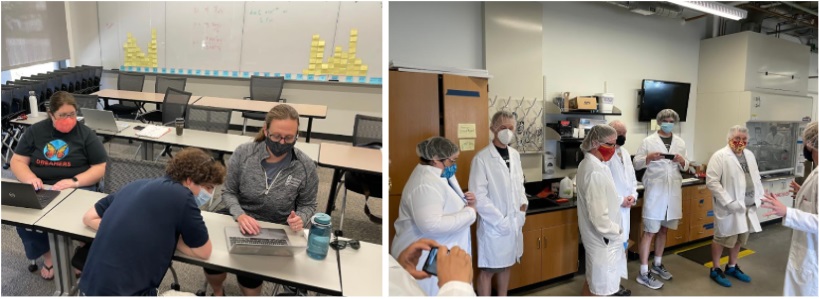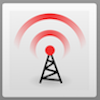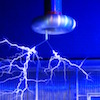Friday Flyer - February 4, 2022

Spotlight on The University of Minnesota QuarkNet Center
Minnesota is home to many things, including the headwaters of the Mississippi River, SPAM, the NOvA far detector, 10,000 lakes (actually 11,842 but who's counting?), and of course the University of Minnesota QuarkNet Center! Greg Pawloski serves as mentor for this center, and in 2021 Karin Foss joined Jon Anderson to serve as the lead teacher team. Participants were very pleased to meet in-person once again for their summer 2021 workshop, as the group hadn't met face-to-face since 2019. This three-day workshop was action-packed, and included trying out several new activities, including some TOTEM data activities in development. The teachers provided QuarkNet staff with valuable feedback that is helping to shape the development of TOTEM activities I-III, soon to be added to the DAP. Greg led the teachers through the latest iteration of a NOvA Masterclass exercise in development, and Neutrino fellow Mike Plucinski followed that up with an analysis of NOvA data in Python. Karin led the teachers through a series of energy conservation activities using coding. Each day, the teachers were a treated to a talk from a U of M physicist or graduate student, including one on MicroBooNE, one on LDMX, and one on Mu2e. All teachers participated in the ever-popular share-a-thon which is a time for them to share lessons, strategies, and other tricks of the trade. Looking ahead, this center plans to pilot a NOvA Masterclass with students this coming April, and hopes to meet in-person again for a teacher workshop in the summer.


News from QuarkNet Central
Attention mentors and lead teachers: We are at that time of year when centers begin to plan for summer workshops and other activities in 2022. An important step in this process is for one lead from each center to complete the 2022 RFP form in order to secure support for these upcoming plans. If one lead from your center has not yet done so, please submit the 2022 RFP by Feb. 15, 2022. Keep in mind that QuarkNet central can provide one of these workshops led by a QuarkNet staff member or fellow in-person at your center, or virtually. If you have any questions, or if you would like help in your planning process, contact your QuarkNet staff member.
Our first QuarkNet Educational Discussions meeting of 2022 was on Jan. 26 where we discussed teaching successes and challenges, physics concepts (including the Mpemba effect (H/T Charlie Payne)) and more! Our next QED will meet on Feb. 9 at 7pm CT and will continue to meet just about every other week until the end of May.
As International Masterclasses get closer, Circulars continue to be posted on a weekly basis, including one from Jan. 28 and one from today, hot off the virtual press. Orientations start tomorrow, CERN videoconferences start Feb. 24, and Fermilab videoconferences begin on March 4. Still need to get the ball rolling? No problem: fill out the ramp-up form or contact Ken, Spencer, or Shane. To learn more, choose the MASTERCLASSES button above and follow your interest!
International Muon Week is coming up, March 14-18. This is the chance for you to make cosmic ray measurements with your students and put together your results with those from other schools everywhere. Details are coming! In the meantime, please send questions to Mark Adams.
Upcoming events and dates:
- The Fermilab Family Open House is virtual again this year, which means you, your students, and your family can join in from anywhere. Registration for events is open an ongoing. BONUS: Our own Mark Adams and Dave Hoppert have prepared videos on cosmic rays for the Open House, which you can access right here in English and in Spanish.
- Beamline for Schools (BL4S) registration is open! In BL4S, teams of high school-age students propose their own experiments to run in a CERN beamline. The winning team(s) actually go to CERN to make their measurements with expenses paid by BL4S. (H/T Barbora Gulelova)
- Want to learn more about neutrinos? (Of course you do!) Consider attending the Kavli Institute for Theoretical Physics program Neutrinos as a Portal to New Physics and Astrophysics on March 26, online or in-person. Registration is free and, if you decide to go in-person, financial aid for travel and lodging is available. (H/T Adam LaMee and Quynh Lan Nguyen)

Physics Experiment Roundup
We at QuarkNet are very pleased and proud to draw your attention to a couple of articles in this month's edition of The Physics Teacher. For those of you who subscribe to TPT, be sure to look extra closely at a couple of articles in volume 60, issue 2, including Solar eclipse and cosmic ray flux and Beyond the classroom: profiling muon flux in relation to overburden in Fermilab's MINOS tunnel. You may notice some familiar names in the lists of authors, including some QuarkNet teachers and students along with Cosmic fellow Nate Unterman, and QuarkNet staff Mark Adams. A big congratulations to all involved; nice work!
An innovative analysis from the ATLAS Collaboration points to differences between beauty and charm decays of the Higgs boson. Astrophysicist Paul Sutter discusses a possible theory in which the Higgs boson could have kept our universe from collapsing in this article from Live Science.
From Phys.org: Researchers at SLAC and Université Paris Saclay introduce a potential new way to search for dark matter involving the detection of shock waves. From Physics: Blowin' in the galactic wind and A new route to generating black holes.

Resources
The open (free) article in this month's Physics Teacher describes a hands-on activity that utilizes Feynman diagrams: Making the quantum scattering of fundamental particles accessible.
The previous Friday Flyer listed several resources that Symmetry had compiled on quantum physics and computing. Several more have been added since, including:
- The quantum squeeze
- What is a quantum network?
- #BlackInQuantum
- The work of Elmer Imes and
- Building the quantum workforce.

Just for Fun
What do you think is the record lifetime for a bubble? Find out here! Continuing on this bubbly theme...here's an article on the physics of blowing bubbles. Still want more? Check out "The Science of Bubbles," a hour-long science documentary with bubble physicist Helen Czerski.
Have you hopped on the Wordle bandwagon yet? If so, you're not alone (from Statista). Kyle Chayka discusses why so many can't resist in this New Yorker article. Or maybe you're in the control group (from xkcd).
QuarkNet Staff:
Mark Adams: adams@fnal.gov
Ken Cecire: kcecire@nd.edu
Spencer Pasero: spasero@fnal.gov
Shane Wood: swood5@nd.edu
